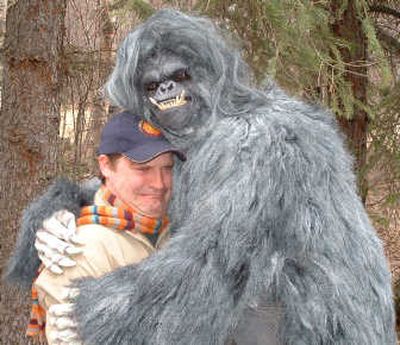Comic Relief

You’d never know from reading his comic strip that there is a sadness at the center of Chad Carpenter’s life.
Carpenter is the Alaska-based cartoonist whose strip “Tundra” begins running today in The Spokesman-Review. (The Sunday strip will begin Nov. 4).
Now 40, Carpenter began writing and drawing “Tundra,” which features a range of offbeat Alaska-themed situations and characters, some 16 years ago.
That was when, to avoid creative conflicts, he stopped reading the cartoon work of others.
“You know, that is kind of sad because the thing I love is reading comic strips,” he said in a recent phone interview from his home in Wasilla, Alaska, which sits about 50 miles northeast of Anchorage. “But there are quite a few of them that I have to steer clear of.”
Why? “Because,” Carpenter said, “I don’t want to wonder, two years later, whether I saw something or if I thought of it myself.”
He makes two exceptions – Walt Kelly’s old “Pogo” strips and Berkeley Breathed’s original “Bloom County” – because neither is remotely similar to what he does.
“I can read them and not have to worry about accidentally mimicking them down the road,” Carpenter said.
If you were to compare “Tundra” to any other strip, it might be Gary Larson’s “The Far Side.” Many of his strips feature animals in absurdist situations.
In one, for example, a couple of crows stand over a bit of road kill, and one is saying, “Oh gross! There’s a hair in my food!” In another, a bear lies restless in his cave, thinking, “Aw, man, March already and I still can’t hibernate. I knew that quad-shot latte last fall was a bad idea.”
Unlike Larson, though, Carpenter also uses a cast of recurring characters who, in their interaction, give readers a more sustained story line to follow.
“I have the two types because that gives me options,” Carpenter said. “It helps keep me creative, basically. It doesn’t limit me.”
Not that he’s experienced many dry spells over the years. Having grown up in Alaska, he knows the territory. The son of an Alaska state trooper, Carpenter moved with his family from one part of the state to the next.
When he was 18, though, he moved to Sarasota, Fla. Like many kids, Carpenter had shown an aptitude for drawing. And an uncle had told him that, if he was interested, he’d introduce him to an acquaintance – the late Dik Browne, creator of the strip “Hagar the Horrible.”
“So I went down there and met him on a golf course,” Carpenter said.
Pretty soon, Carpenter was hanging out with Browne, watching him take an idea and follow it through to the final stages of creation.
“He would let me come into his studio there in Sarasota and let me watch him draw ‘Hagar’ and tell me about all the technical aspects of cartooning,” Carpenter said, “which there aren’t many. And that’s nice because I’m a low-tech guy.”
It was another cartoonist, Mike Peters of “Mother Goose & Grimm,” who told Carpenter that, like all good artists, he should write and draw what he knew best. And what Carpenter knew best was Alaska. So he returned home, took up residence in Anchorage and while working as a process server and security guard began drawing.
That’s how he ended up, at age 24, self-publishing 3,000 copies of his first “Tundra” collection – which sold out in six weeks.
And when he approached the editor of the Anchorage Daily News with 32 strips tucked under his arm, wondering whether the paper was interested in running them, he was surprised when the man said yes.
“I began to think, ‘Maybe I can make a living doing this,’ ” Carpenter said. “It didn’t seem too difficult after all.”
It wasn’t. Pretty soon he was able to quit his day jobs, give up his plans to attend the state trooper academy and even get married (he and his wife, Karen, have three children, ages 15, 13 and 10).
These days, “Tundra” is published in some 135 newspapers in Alaska and the continental U.S. Carpenter’s business partner, Bill Kellogg, and he syndicate by themselves, though they just signed with King Features to sell the strip internationally.
Carpenter is fairly certain that the strip will work in wintry climates, the Scandinavian countries and Germany, for example.
“But it will be really interesting to see how it does in other countries.” he said. “King Features seems very enthusiastic about it. And optimistic.”
All things considered, there’s nothing sad about that. Nothing sad at all.